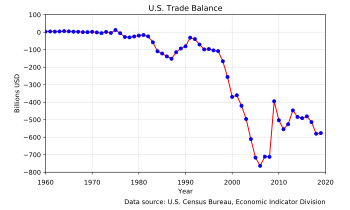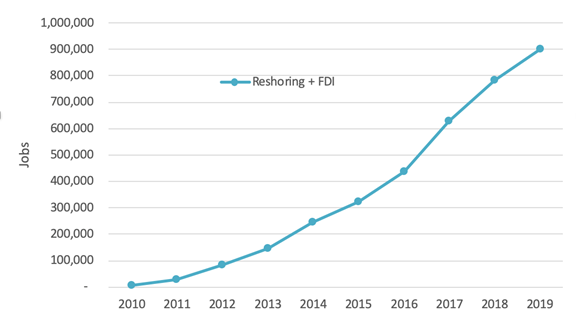The second day of the CPA virtual conference held March 23-27th featured two panels: the first on the topic of “Reforming Corporate Taxation to Help Reshore Our Industries,” and the second on ”Buy American.” In the first panel, the focus was on whether or not additional tax reform is needed by Congress to make sure that tax loopholes that currently favor multinational corporations over domestic companies will be closed.
The Tax Cuts and Jobs Act of 2017 (TCJA) reduced corporate tax rates to a flat tax of 21% from a graduated tax system ranging from a low of 15% to a high of 35%. At the time, the U. S. had the highest corporate taxes in the world after Japan had reduced their corporate tax rate to 30.86% in 2016, down from a high of 40.69% in 2010.
David Morse, CPA Tax Policy Director, moderated the panel, which began with a tribute to Bill Parks for his work on Sales Factor Apportionment. Mr. Parks is Founder and President, Northwest River Supplies and Founding Director, SalesFactor.org, “which works to advance tax policy that would level the playing field between domestic and multinational corporations, improve U.S. competitiveness in world markets, and foster the long-term health of the American economy.”
Simply stated, Sales Factor Tax Apportionment would tax U. S. and foreign multinational corporations based on their sales in the United States. In other words, the profit a company generates on its U.S. sales would be taxed. These taxes would have to be paid to do business in the U. S. This would eliminate profit shifting to divisions in other countries or claiming residence in a country with lower or no corporate taxes in order to avoid U.S. tax obligations.
Senator Bill Crapo (R-ID) participated in the panel with a pre-recorded video in which he paid tribute to the work of Bill Parks, whose company is in his state. He touted TCJA for reducing corporate taxes and stated that it stemmed offshoring of American manufacturing and helped reshoring. He said that we could strengthen TCJ with legislation on Sales Factor Tax Apportionment.
Representative Bill Pascrell (D-NJ) also participated in the panel with a pre-recorded video. Rep. Pascrell is on the Ways and Means Committee in the House, and he said that the current tax system is tilted to wealthy and large corporations at the expense of small to medium-sized businesses. In his opinion, TCJA wasn’t tax reform, and real tax reform is needed.
Ji Prichard, who is Tax Counsel on the House Ways and Means Committee, shared that tax reform is under discussion in the committee. President Biden’s “Build Back Better” campaign plan had a “carrot and stick” approach to reshore manufacturing – a 10% tax credit for reshoring and a 10% fine for offshoring.
The third panelist Professor Reuven Avi-Yonah, Irwin I. Cohn Professor of Law and director of the International Tax LL.M. Program at the University of Michigan. Professor Avi-Yonah has written extensively on the subject of taxes. He supports the Sales Factor Tax Apportionment because he believes that it will solve a major problem in the tax code: tax avoidance by multinational corporations through profit shifting to offshore entities and reincorporating in tax haven countries. The problem with the OCED tax proposal is that it is only focused on digital transactions that would hurt American high-tech companies. He believes that SFA could be applied unilaterally.
The Buy American Panel was moderated by the Co-Chairs of the CPA Buy American Committee: Greg Owns, CEO, Sherrill Manufacturing and Liberty Tabletop, and Jim Stuber, Founder of Made in America Again and author of What if Things were Made in America Again.
Senator Tammy Baldwin (D-WI) participated in the panel via a pre-recorded video. She said, “Wisconsin is a state that makes things. We are #1 or #1 in manufacturing of paper, tools, and ships. It is very important that we produce the things that keep us safe and healthy. When the pandemic started, we saw a shortage of masks, gloves and other PPE. The American Rescue Plan for COVID relief included 10 billion dollars for government purchase of essential goods under the Defense Production Act.” She also said, “The pandemic made it clear that we need country of origin labeling (COOL) for online purchases. I appreciate CPA’s help in drafting a bill. There are lots of gaps in the Buy American policy for infrastructure. Trade deals have provisions that give foreign companies the right to bid on government procurement. There are 16 countries that can bid as if they are an American company. But the President can waive these provisions of trade deals in emergency situations.”
Senator Cynthia Lummis (R-WY) participated in a live video, and she said, I support country of origin labeling. I am a lifelong rancher. We need more domestic products. Wyoming has rare earth minerals and is an energy producing state. Buying local and buying American grew in importance during the last year. I think food security is a national security issue. You can count on me as an ally on Buy American.”
Representative Claudia Tenney (R-NY) said she is the representative for the district in which Greg Owen’s company is located and also where Revere Copper is located (owned by Brian O’Shaughnessy, CPA’s Vice Chair.) She said that 94% of workers in her district work for small businesses. She also supports Buy American and country of original labeling.
The last panelist was Brad Markell, Executive Director of the AFL-CIO Industrial Labor Council. He said, “This is the manufacturing arm of the AFL-CIO that includes the presidents of all of the unions in the manufacturing industry. The Trump Administration made great strides on Buy American. The Biden administration left these Executive Orders in place and have added two more E. O.s related to Buy American and supply chain. Too many government agencies have waivers for Buy American. The manufacturing component of infrastructure is high for construction. Every time the federal government spends money is an opportunity to create jobs.”
The day’s session ended with closing remarks by Bill Bullard, CEO of the Ranchers Cattlemen Action Legal Fund United Stockgrowers of America (R-CALF USA). He said, “The cattle industry is the single largest segment of U.S. agriculture generating about $65 billion in sales. There are about 729,00 farmers and ranchers in the U.S., down about a half million the past 40 years. Farmers and ranchers are scattered across the country and in nearly every county. Since 1990, we have lost 200,000 cattle ranches and millions of cattle. The U.S. underproduces cattle to supply demand and imports are increasing. We import beef from 20 countries and about two million live cattle from Canada and Mexico each year. Since NAFTA, the amount of beef we import from Canada and Mexico has tripled, so that we’ve accumulated a $40 billion deficit. Retail prices have risen, especially since 2017, but the rancher’s share of the price has drastically dropped. This is because there are only four meat packing plants in the U.S. and two are owned by Brazilian companies, so when you have many sellers and few buyers, the price drops.”
Bill’s proposed solution to this problem is country of origin labeling for retail sales that states where the cattle was born, raised, and slaughtered. Imported beef that is repackaged must also reveal the country from which it is imported. This would be non-discriminatory to all countries. He also stated that “Buy American” policies for federal procurement should require that beef procured for school food programs and the military should fit the criteria of born, raised, and slaughtered in the U. S. He urged everyone to contact their Congressional Representative and Senator to support country of original labeling for beef.
We learned a hard less during the COVID pandemic about the dangers of being reliant on foreign countries for our pharmaceuticals and PPE. We must not allow foreign imports of beef and foreign ownership of meat packers to endanger the largest segment of agriculture products. Protecting the safety of our food production is a national security issue.

